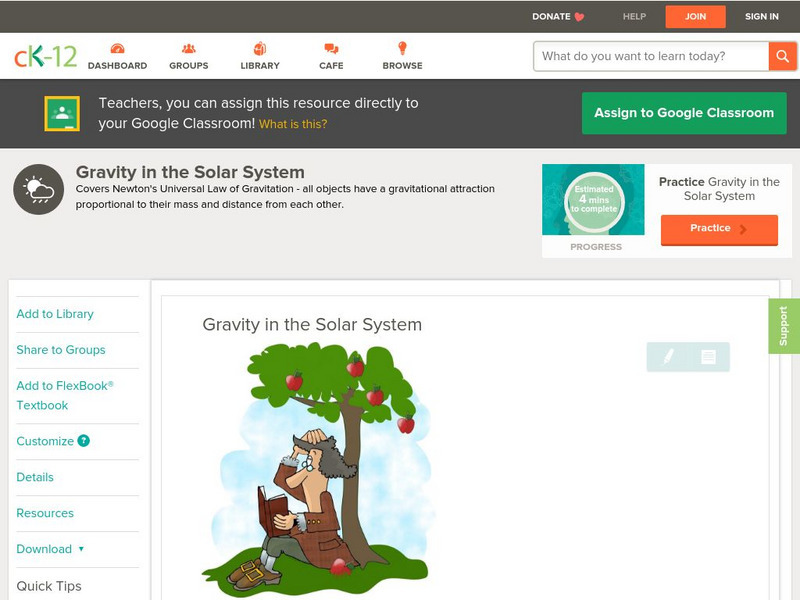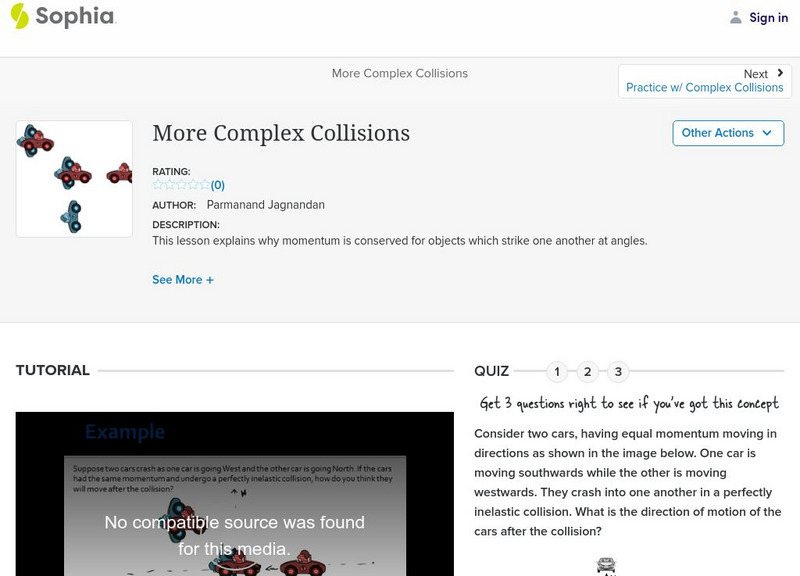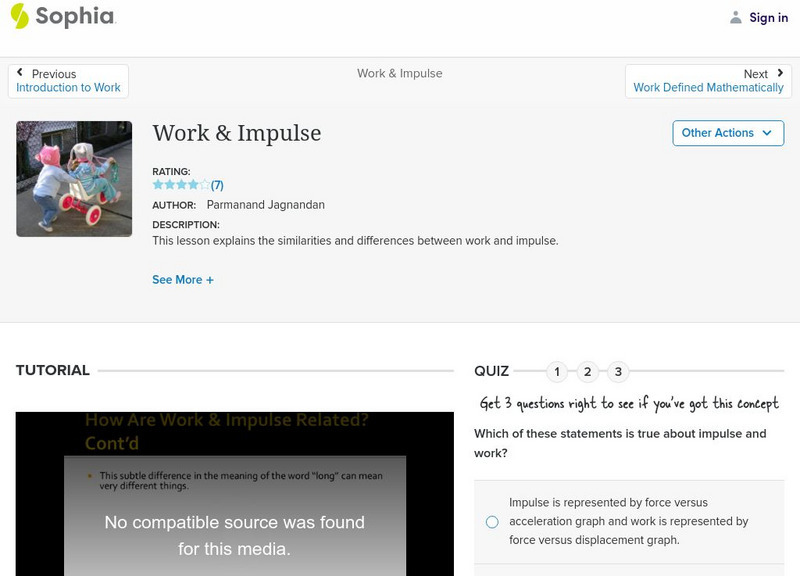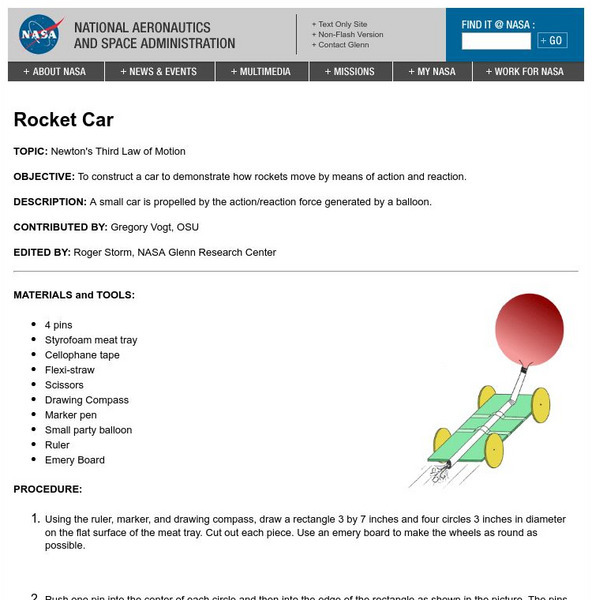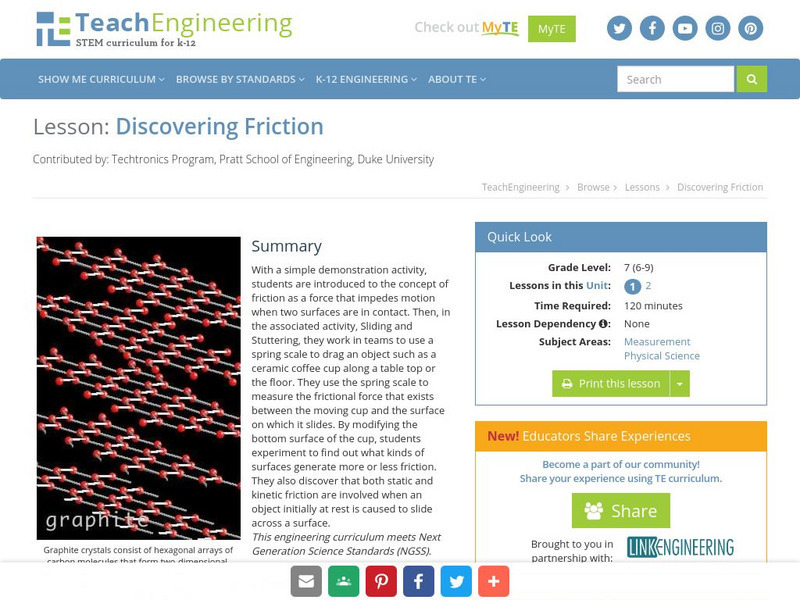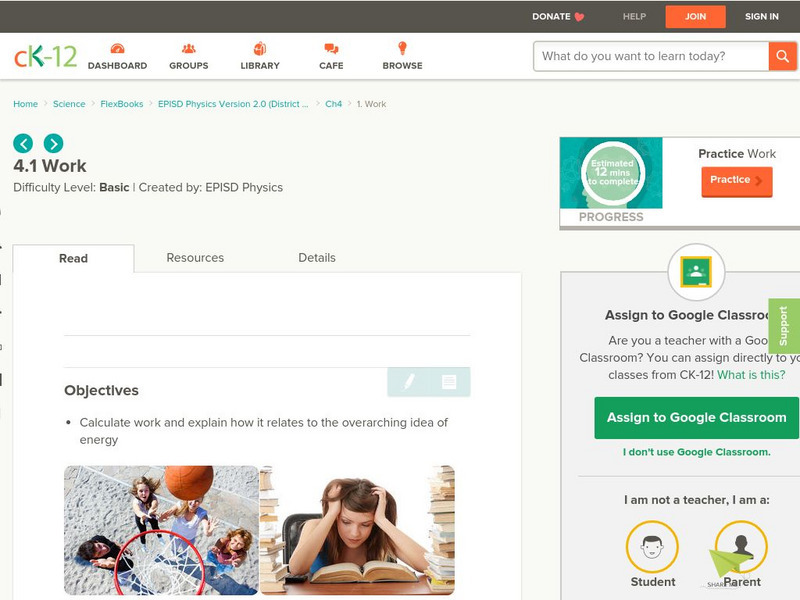Hi, what do you want to do?
CK-12 Foundation
Ck 12: Earth Science: Gravity in the Solar System
[Free Registration/Login may be required to access all resource tools.] Understand the role of gravity in space.
Science and Mathematics Initiative for Learning Enhancement (SMILE)
Smile: Objects Race
In this lesson plan grab a slope and different objects. Roll the objects down the slope and record which is the fastest. Students analyze the features of the objects that make them slow or fast.
Sophia Learning
Sophia: Increasing Momentum
This lesson explains how to increase the momentum of a system.
Sophia Learning
Sophia: Inelastic Collisions & Conservation of Momentum
This lesson explains why conservation of momentum can be applied to inelastic collisions.
Sophia Learning
Sophia: More Complex Collisions
This lesson explains why momentum is conserved for objects which strike one another at angles.
Sophia Learning
Sophia: Work & Impulse
This lesson explains the similarities and differences between work and impulse.
Sophia Learning
Sophia: Forces in a Rope & Pulley System: Lesson 2
This lesson explains what forces are acting on objects which are at rest or moving in a rope and pulley system. It is 2 of 2 in the series titled "Forces in a Rope & Pulley System."
NASA
Nasa Glenn Research Center: Rocket Car (Class Activity)
Students discover Newton's Third Law of Motion by constructing a rocket car.
Physics Classroom
The Physics Classroom: Vectors: Inclined Planes
Through examples and interactive practice problems, this physics tutorial helps students understand how forces behave on an object on an inclined plane.
TeachEngineering
Teach Engineering: Imagine Life Without Friction
Students are introduced to the concept of inertia and its application to a world without the force of friction acting on moving objects. When an object is in motion, friction tends to be the force that acts on this object to slow it down...
TeachEngineering
Teach Engineering: Discovering Friction
With a simple demonstration activity, students are introduced to the concept of friction as a force that impedes motion when two surfaces are in contact. Then, in the Associated Activity (Sliding and Stuttering), they work in teams to...
TeachEngineering
Teach Engineering: Seismic Waves: How Earthquakes Move the Earth
Middle schoolers learn about the types of seismic waves produced by earthquakes and how they move the Earth. The dangers of earthquakes are presented as well as the necessity for engineers to design structures for earthquake-prone areas...
Discovery Education
Discovery Education: Friction in Our Lives
Students observe objects in motion down a ramp to discover how the force of friction affects an object's motion. Includes the lesson plan, vocabulary list, and extensions for students.
BBC
Bbc: Gcse Bitesize: Newton's Second Law
This lesson focuses on Newton's Second Law including the formula Force = mass to the x power acceleration, an example of how to calculate the force needed to accelerate based on mass, and a link to a test.
Physics Classroom
The Physics Classroom: Vectors Motion and Forces in Two Dimensions: Resultants
This physics tutorial illustrates problems that show the vector sum of two or more vectors is the resultant.
Physics Classroom
The Physics Classroom: Motion and Forces in Two Dimensions: Vector Resolution
In this unit, students learn two basic methods for determining the magnitudes of the components of a vector directed in two dimensions. The two methods of vector resolution students will examine are the parallelogram method the...
CK-12 Foundation
Ck 12: Work
[Free Registration/Login may be required to access all resource tools.] In this online lesson students will learn to calculate work and explain how it relates to the overarching idea of energy.
Physics Classroom
The Physics Classroom: Circular and Satellite Motion: Amusement Park Physics
In this interactive module, students explore the centripetal acceleration experienced by riders within the circular-shaped sections of a roller coaster track.
Alabama Learning Exchange
Alex: To Push or Pull, That Is the Question?
In group students will learn to identify pushes and pulls. Students will learn how a push or pull will affect various items. This lesson plan was created as a result of the Girls Engaged in Math and Science University, GEMS-U Project.
TryEngineering
Try Engineering: A Question of Balance
Young scholars work in teams to fill jars with a product that is uniform in weight or count. Lesson investigates how manufacturing engineers use weight scales and measurement to develop systems that can create consistent products.
TryEngineering
Try Engineering: Simple Kitchen Machines
Team lesson focuses on the different types of simple machines, how they work, and how they can be found in daily life.
TryEngineering
Try Engineering: Chair Lift Challenge
Lesson investigates how engineers develop safe transportation systems to operate in a variety of climates and environments. Teams of learners work together to construct a "chair lift" made from everyday materials as a test of this...
TeachEngineering
Teach Engineering: Building Roller Coasters
In this hands-on activity students learn about the laws of physics by creating a marble roller coaster.
Discovery Education
Discovery Education: Physical Science: Gravity Gets You Down
For this lesson, students make predictions about falling objects of different sizes and masses to learn about gravity and air resistance. Includes audio vocabulary list and extension activities.





